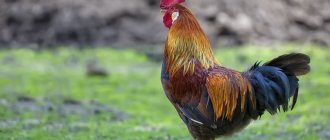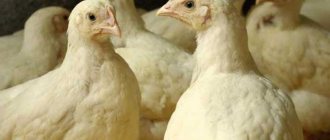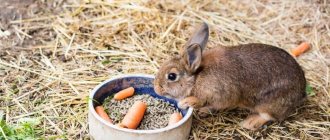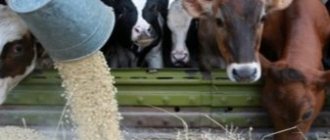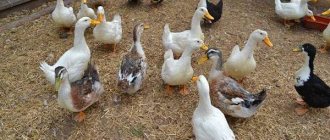Breeding ducks at home and on the farm is a profitable business that allows you not only to provide your family with meat, but also to make a profit from the sale of carcasses and chicks. In order to competently form a parent flock and plan the breeding of young animals, the poultry farmer needs to know the egg production of the wards and the duration of incubation of the duck offspring.
Hatching eggs in different breeds
On the farm you can find not only ordinary, domestic birds, but also wild varieties of ducks. Obtaining young animals from different groups of ducks has its own characteristics.
domestic duck
Common waterfowl, common on home farms, lay for 26 to 29 days . But not all breeds of ducks have retained the brooding instinct and regularly take care of their offspring. The higher the egg production of an individual, the less chance that the female will sit on the nest.
If the bird does not want to hatch the young, an incubator is used. The timing of artificial hatching of ducklings does not differ from the time of incubation by a duck. The humidity in the incubation chamber is maintained at 65%, and the incubation material is turned over at least 3 times a day. Starting from the second half of the hatching period, the eggs are sprayed daily with warm water.
In the incubator, the percentage of chicks hatching is 60–80%; under the hen, the percentage of hatching is higher - 90%.
Indian
Muscovy ducks (indo-ducks, mute ducks) hatch their offspring for more than a month - 32–33 days . The maximum incubation period can be 35 days.
Indian ducks set up a nest when they lay 12–18 eggs and begin to incubate. During the process, they try to disturb the duck as little as possible. Muscovy ducks have nests in the form of a closed house, since in natural conditions they hatch ducklings in tree hollows.
The best period to start hatching is the end of March - beginning of April. Sometimes ducks refuse to hatch chicks at other times of the year.
After the babies hatch, they can be left with their mother or raised on their own. If the young are taken from the duck, then after a while she will start laying eggs again and hatch ducklings again. Musks can detect an egg with a frozen embryo, and then throw it out of the nest.
Wild duck
Wild ducks incubate eggs for 26–27 days. The chicks are independent from birth and almost immediately follow their mother. Female mallards and other wild ducks are excellent caring mothers who protect their offspring from predators and keep them warm at night. It is enough for the owner of the bird to provide the family with water and food, and provide them with grazing.
Bashkir
The Bashkir breed of ducks was bred for farms and private farms on the basis of the Peking variety. The Bashkir bird lays up to 120 eggs a year and does not strive to incubate them.
Bashkir duck chicks are hatched in an incubator. The hatching time for young ducks is 27–28 days.
Material for incubation is accumulated for no more than 10 days, keeping it in a cool place. Incubation material is collected daily, immediately after laying.
Beijing
The oldest breed, bred more than 300 years ago. It has the highest egg production among domestic ducks - up to 200 eggs per year.
Peking ducks have long lost their maternal instinct and reproduce only with the help of an incubator or brood hens of other bird species. The hatching period for young animals is 28 days.
Ukrainian
A meat-egg breed, characterized by its unpretentiousness and tasty meat. Ukrainian duck sits on eggs for 27–28 days .
After hatching, the chicks are removed from under the duck as soon as they are dry. It is better to raise young animals of this breed on your own, rather than with their mother. The female, having walked around after incubation, will begin to lay eggs again. During the year, the Ukrainian duck can hatch ducklings twice.
General Features
The spring season is the best for the incubation process. During the hatching period, the following rules are followed:
- hens are not overfed;
- the poultry house should be warm, without drafts;
- maintain cleanliness in the premises;
- the water in the drinking bowl is changed every day;
- there should be no bright lighting.
In order for ducklings to grow strong and healthy, you need to follow all the rules for caring for them.
Litter is removed every day to reduce the possibility of infection of the young. The best result is obtained at the second stage of incubation, provided that there are no more than 5 females per drake. The male will not be able to fertilize more than that. If this rule is observed, the female lays eggs regularly.
You should not place more than 15 eggs under a duck. She may quit, feeling like she can't cope.
You can't help chicks to be born. This process takes a long time, but it should take place naturally, without human intervention.
After the chick crawls out of the shell, it is temporarily taken from the nest from the duck, placed in a dry box covered with clean straw, and placed under heating.
Can a duck sit on empty eggs?
The brooding instinct forces the bird to sit not only on empty (unfertilized) eggs, but also on artificial pads. If the entire clutch consists of unfertilized specimens, and the poultry farmer does not know the approximate hatching date, the duck can sit on the nest for up to 2 months. Such a long incubation exhausts the bird and can cost it its life.
They resort to placing a fake egg in the nest when the duck has already settled on the clutch, and the required amount of material has not yet been collected. The following is used as a “lining”:
- wooden souvenir eggs painted white;
- light plastic containers made of chocolate eggs, with sand poured into them.
It is wrong to reuse a hen after a brooding cycle. She needs to be given the opportunity to rest and gain back the lost weight.
How to select the right material?
The duckling will hatch her clutch on her own, so the poultry farmer needs to choose good material in order for healthy ducklings to hatch.
It is very important to pay attention to the following details when selecting:
- The size and shape of the eggs play a special role: they should not be too small or, on the contrary, large, the shape should be round and even, without dents or scars.
- The optimal weight is 75-95 grams.
- The selected material is not stored for more than ten days. It is prohibited to use eggs from the refrigerator.
- The material should be approximately the same weight.
- The shell should not have any dirt or droppings on it.
The frequently asked question “How many eggs can a duck hatch?” - it is impossible to give an exhaustive answer. It depends on the size of the hen. Under a small-sized bird, 8-12 pieces are placed for hatching, under a medium-sized bird - about 20 pieces, and under a large-sized bird - up to 30. But it is better to put a maximum of 25, otherwise the bird will not cover the future chicks with its entire body, and some will be left without maternal warmth. They will not be able to all hatch at the same time or will die altogether, and the duck will throw them out of the nest. The eggs should be equally warmed by the bird.
Laying eggs is a painstaking task and requires caution. This process is carried out gradually so as not to scare the hen.
At the moment when she goes away to drink or feed, the farmer must quickly lay new eggs. If the bird is sitting in the nest, then slowly lay one egg at a time. If you follow this mechanism, the location of the eggs under the hen’s body will be uniform, and the maturation of the embryos will occur at approximately the same time.
What to do if the duck sits for a very long time
If a duck hatches its offspring longer than the allotted time, it is necessary to check the material for fertilization (presence of a chick). At night, in order to disturb the hen less, the eggs are taken from under her and examined using an ovoscope. If the egg is transparent when candled, it means it is empty. The dead embryo is indicated by a dark and motionless mass under the shell.
Eggs with chicks ready to hatch are warm. When scanned, you can see the duckling moving under the shell and hear squeaking.
It is not recommended to try to pick the shell and pull the baby out on your own; this threatens the chick’s death.
As a rule, young waterfowl hatched under a hen hatch amicably and on time.
Preparation for bookmarking
Before laying the eggs, you need to keep them in a warm room for 2-4 hours (this will allow them to warm up). You can’t put them in the trays right away; you need to wait until the device heats up to the desired level (usually 38 degrees)
When laying, it is important to separate small from large eggs and place them in different containers. Contaminated copies need to be cleaned
Disinfection
This is necessary to eliminate the dangerous microflora that develops on the shell (penetrating inside, it harms the embryo). On farms, eggs are disinfected with formaldehyde vapor. For private breeding, a regular iodine solution or chloramine is suitable.
To wash or not to wash?
Not all farmers approve and carry out washing, since wet shells are an ideal place for the development of fungus and various pathologies. If you decide to wash eggs, use special antiseptics. These are Virocide, Monclavit-1 and others.
An alternative is 1.5% hydrogen peroxide or potassium permanganate. The temperature of the products should not be higher than 30 degrees, the soaking time should be 3-5 minutes. After soaking, take out the egg, then use a toothbrush to remove all dirt (dried feathers, droppings). Next, the egg is placed on a clean surface until completely dry.
Breeding difficulties
The main problems that arise for poultry farmers raising ducks lie in the low fertilization of eggs and the refusal of ducks to incubate:
- Ducks lay unfertilized eggs when there are not enough drakes in the herd. There should be no more than 6 ducks per male.
- Low fertility may be due to the feeding of the bird. When obese, ducks lay empty eggs.
- The lack of vitamins and minerals also negatively affects the quality of the incubation material. Feeding the duck flock during the breeding season should include not only grain mixture, but also fresh vegetables, herbs or grass meal, and synthetic vitamins (premix).
- Often hens leave the nest after a few days of incubating eggs. The reason for this may be an incorrectly chosen location for the nest . The nest for the hen is installed in a secluded darkened corner, with food and water placed nearby.
- Recommended nest size for a duck: width - 40 cm, length - 50 cm, height of the sides - 10 cm. A bedding of wood shavings or straw is placed at the bottom of the “house”.
Before the start of the breeding season, birds are prevented from worms and external parasites (fleas, ticks, lice). The barn is thoroughly cleaned and treated from harmful insects. Parasites cause a lot of inconvenience to the hen, sometimes forcing her to leave the nest for good.
In order for the duck to create the necessary moisture for the eggs, it needs to bathe. A basin or trough with water is placed not far from the nest. A wet hen, returning to the nest, moistens the eggs.
Incubators are used to produce hundreds of birds per year.
The hatching rate of ducklings in them is lower than under a live hen. But in the end, with a large population, this method of obtaining young animals turns out to be more profitable. Raising ducklings under a broody hen is suitable for poultry farmers keeping small flocks for their own needs. Beginning farmers are also recommended to entrust the breeding of young animals to the ducks themselves.
Tribe selection
Indicators that can be achieved during laying
To form a duck flock for further breeding, young animals are selected before wintering. If these are light breeds, then the ducklings must reach the age of 150 days. For heavy breeds, it is advisable to select individuals with 175 days of age.
It is necessary to control the moment when the drake shows its intention to trample ducks, so that this does not happen too early before wintering, since it will be difficult to create optimal conditions for incubation and nursing of ducklings on cold days.
When forming the main flock, you need to collect birds of the same age. Ducks should have approximately identical body weight to each other. Sex ratio is also of great importance.
If light breeds are bred, then 7 - 8 ducks are sent to one drake; for heavy crosses, the number of females should be less and be approximately 4 individuals.
Females are selected that are energetic and active with strong bones.
Experienced poultry keepers evaluate the angle formed by the lines that serve as a continuation of the abdomen and back. If it is almost straight, then this is a sign of a good layer. You can mark ducks with low egg production and during the period of intensive egg laying. They remain as brightly colored as at the very beginning of the productive period. Good layers gradually fade and lose pigmentation.
Changes in body weight of male and female Peking ducks
The most popular musk drakes for home keeping exhibit a clearly defined seasonality in the manifestation of the sexual instinct. This has a direct effect on the fertilization of eggs. In the last spring months, a high percentage (up to 96%) of the presence of fertilized eggs is observed. By the end of summer, the drake becomes more inert and does not actively trample females, so the number of high-quality incubatory fertilized eggs can decrease to almost 50%.
Muscovy duck with ducklings
Since eggs obtained from musky ducks are coated, it is not advisable to use fresh ones for incubation. With proper storage, eggs become the best incubation material after two weeks of storage. The hen definitely needs to take water treatments, as it irrigates the eggs, improving their gas exchange. At the same time, when turning over, the duck gradually removes the protective film.
The main conditions of detention for ducks to start laying eggs
Ducks begin to lay eggs at 5-6 months if they are kept according to the rules. Egg production increases when the required temperature is maintained in the room.
Ducks begin to lay eggs at 5–6 months if they are kept according to the rules
Productivity is influenced by nutritional adjustments and daylight hours. The breed also influences the age at which Indian ducks begin to lay eggs.
Complete and constant feeding
25-30 days before the bird begins to lay its first eggs, it needs frequent, nutritious meals. At this time, a feeding regimen is established at least 4 times a day.
Various nutritional elements and vitamins help the egg to form; for this purpose, the food is balanced.
Boiled meat, fish, whey, low-fat cottage cheese and products containing animal fats will help the little duckling get stronger, grow, and gain weight.
Increased daylight hours
Domestic ducks will be able to lay their first clutch ahead of schedule if additional lighting is installed in the room.
The development of reproductive organs in birds is directly related to light, therefore, before laying begins, the daylight hours are gradually increased to 15-16 hours, adding 25-30 minutes daily.
Light bulbs with a power of 700 lm are hung evenly around the perimeter of the poultry house (1 light bulb per 1 m²). At night, one dim lamp is left on and the rest of the lighting is turned off.
Walking mode
Daily bird walking should take 40-45 minutes. This is important when ducks begin to lay eggs.
Domestic ducks will be able to lay their first clutch ahead of schedule if additional lighting is installed in the room
Also, walks include water treatments, so there should be a small pond near the poultry house.

